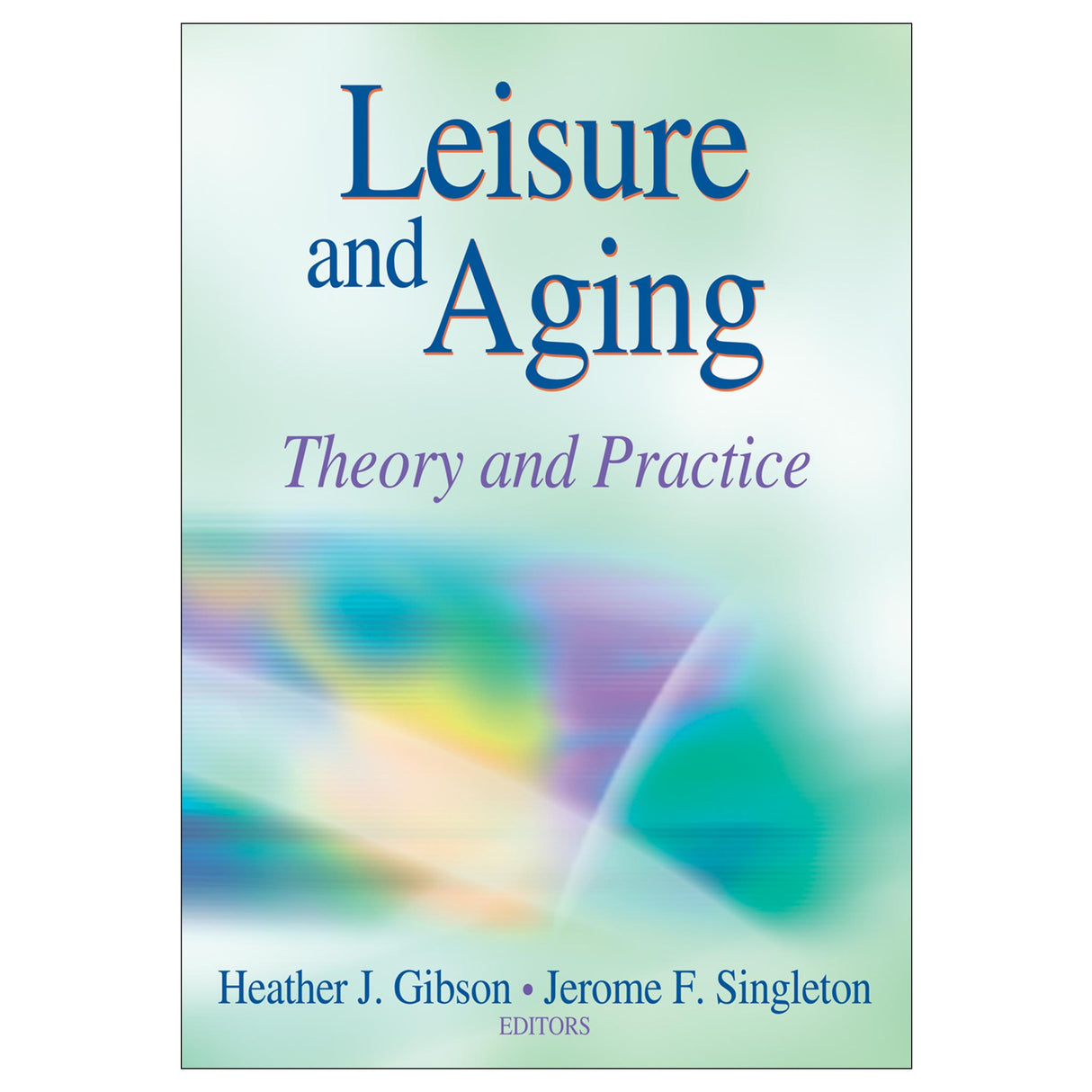Leisure and Aging epub
Theory and Practice
Author: Heather Gibson, Jerome Singleton
$52.00 USD
Access Duration: 10 Years
The number and percent of older people in developed countries continue to grow, thanks to medical advances and decreases in fertility and mortality rates. And that means that tomorrow’s recreation and leisure professionals will be more challenged than ever to meet the needs of an increasingly older culturally diverse population.
Leisure and Aging: Theory and Practice provides students and professionals with a balanced perspective of current knowledge as it presents cutting-edge research from the fields of both gerontology and leisure studies. Written by authors from various disciplines who represent an international who’s-who in leisure and aging research, this text
• explores theories in leisure and aging;
• bridges the gap between research and application, arming professionals with tools to navigate diverse cultures; and
• offers insight into delivery of leisure services in older adult communities and long-term care environments.
Each chapter features learning objectives, study questions, case studies, exercises, and relevant readings. The book is supplemented by online ancillaries, including an instructor guide, test package, and a presentation package with photos, illustrations, and tables from the text. Together, the text and online ancillaries help students connect theories and practice as they prepare for future roles in their chosen fields.
Leisure and Aging is presented in five sections. Part I introduces global perspectives on leisure and aging, while part II examines the relevance of leisure in an aging context. Part III explores the effects of aging on physical, psychological, social, and spiritual well-being and health. Parts IV and V delve into the role of community in aging and leisure and long-term care and leisure.
Written for undergraduate students, professors, and professionals in recreation, leisure, gerontology, and aging, Leisure and Aging provides a wealth of knowledge on various aspects of life for older people and the role of leisure in their lives. The text helps students think critically about a phase of life that seems remote from their own and provides perspective to their understanding of aging and leisure.
Part I. Setting the Stage
Chapter 1. Global Perspectives on Leisure and Aging
Richard D. MacNeil and David L. Gould
Demography and Population Aging
Global Aging: Current and Future Status
Leisure and Quality of Life in Older Adulthood
Conclusion
Learning Aids
Chapter 2. The Influence of Leisure on Discourses of Aging
Rylee A. Dionigi and Sean Horton
Negative Aging Discourse
Positive Aging Discourse
Leisure as Resistance to Ageism
Leisure as Reinforcement of Ageism
Conclusion
Learning Aids
Part II. Theoretical and Methodological Perspectives on Leisure and Aging
Chapter 3. The Relevance of Leisure in Theories of Aging
Douglas A. Kleiber and M. Rebecca Genoe
Leisure as a Context for Continuity and Change
Psychological Theories of Aging
Sociological Theories of Aging
Conclusion
Learning Aids
Chapter 4. Studying Leisure in the Context of Aging
Bryan Smale and Jennifer Gillies
Epistemological Perspectives Guiding Research
The Role of Theory
Two Broadly Defined Approaches to Research
Quantitative Inquiry
Qualitative Inquiry
Roles and Responsibilities of the Researcher
Doing Research Well
Conclusion
Learning Aids
Chapter 5. Leisure Across the Later Life Span
Galit Nimrod and Megan C. Janke
Life-Span Development Models
Changes in Leisure Behavior as People Age
Changes in Leisure Meanings as People Age
Leisure and Later-Life Transitions
Time Misuse in Later Life
Conclusion
Learning Aids
Chapter 6. Leisure and Diversity in Later Life: Ethnicity, Gender, and Sexual Orientation
Steven E. Mock, Susan M. Shaw, Erica M. Hummel, and Carissa Bakker
Critical Gerontology
Ethnicity and Race
Gender
Sexual Orientation
Conclusion
Learning Aids
Part III. Leisure and Healthy Aging
Chapter 7. Leisure and Physical Well-Being
Bevan C. Grant and Mary Ann Kluge
Health Maintenance as a Benefit of Physical Leisure
Constraints to Engaging in Physical Leisure
Implications for Programming
Integrating Leisure and Physical Activity
Accessing the Meaning of Active Aging
An Active Future
Conclusion
Learning Aids
Chapter 8. Leisure and the Psychological Well-Being and Health of Older Adults
Roger C. Mannell and Ryan Snelgrove
Leisure and Psychosocial Well-Being
Leisure and the Cognitive Health of Older Adults
Conclusion
Learning Aids
Chapter 9. Leisure and Social and Spiritual Well-Being
Paul Heintzman and Erin Patriquin
Defining Key Concepts
Aging, Leisure, and Social Well-Being
Aging, Leisure, and Spiritual Well-Being
Leisure-Spiritual Coping Model
Conclusion
Learning Aids
Part IV. Community, Aging, and Leisure
Chapter 10. The Role of Community in Encouraging Healthy Aging Among Older Adults
Richard Gitelson and Julie Freelove-Charton
Impact of Choice and Environment on Health
Active Adult Communities
Resources in Communities Without Age Restrictions
Conclusion
Learning Aids
Chapter 11. Tourism and Aging
Ian Patterson and Shane Pegg
Sociodemographics of Travel
Meanings of Tourism
Motivations to Travel
Constraints to Travel
Modes of Travel
Temporary Communities
Older Mobile Travelers
Research on Snowbirds
Adventure Tourism
Educational Tourism
Conclusion
Learning Aids
Part V. Leisure in Long-Term Care
Chapter 12. Leisure in Long-Term Care Settings
Sherry L. Dupuis, Colleen Whyte, and Jennifer Carson
Predominant Culture Within Long-Term Care Settings
Alternative Approaches to Care in Long-Term Care Settings
Quality of Life Through Leisure in Long-Term Care Settings
Reflection and Practice
Conclusion
Learning Aids
Chapter 13. Bridging Community and Long-Term Care Settings
Elaine Wiersma and Stephanie Chesser
Definition of Concepts
Transition From Community Settings to Long-Term Care Settings
Concepts of Community in Long-Term Care Settings
Creating Community in Practice
Conclusion
Learning Aids
Instructor guide. Contains a sample syllabus, teaching ideas, student learning objectives, suggested learning activities, and additional resources.
Test package. Includes multiple-choice, true-and-false, fill-in-the-blank, and short-answer and essay questions.
Presentation package. Includes a comprehensive series of PowerPoint slides for each chapter.





